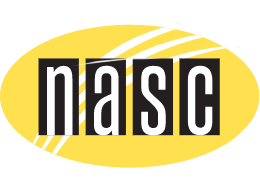My Dog Ate Chocolate! What Do I Do?

Dogs should never, ever have access to chocolate. But they sometimes manage to get into it anyway. So if you know your dog ate chocolate, here’s what to do and when you need to call your vet.
What If Your Dog Ate Chocolate?
You need to move quickly, especially if you don’t know when he ate the chocolate. Symptoms may not show up for a few hours (see Symptoms Of Chocolate Poisoning below), so hopefully you’ll find evidence like empty wrappers to give you a clue that your dog ate chocolate. And if you can pinpoint how long he was unsupervised, that may help establish the timeline too. In any event, you need to get it out of his system.
Keep these 4 items in your first aid kit at all times. Then you’re prepared in case your dog eats chocolate:
- 3% Hydrogen peroxide
- Activated charcoal, food-grade
- Bentonite clay, food-grade
- 50 ml syringe (available in packs of assorted sizes)
If you are certain your dog ate chocolate, stay calm. Then follow these steps.
4 Steps To Follow If Your Dog Ate Chocolate
Here’s what you need to do.
Step 1: Figure Out How Much Chocolate Your Dog Ate
- How long ago did he eat chocolate?
- How much chocolate did he eat?
- What type of chocolate did he eat?
- How much does your dog weigh?
Use this chocolate toxicity calculator to calculate how many mg per kg of bodyweight of chocolate your dog ate. The calculator lets you select your dog’s weight., the type of chocolate he ate, and the amount … then tells you how dangerous it is and what symptoms you should expect.
STOP! If the chart shows that your dog ate enough to be harmful, call your veterinarian. She’ll let you know if you should induce vomiting or if you need to bring him in so she can do it. She’ll also determine if your dog needs activated charcoal. She can give both more easily than you can.
It’s a good idea to call your vet even if you think your dog didn’t eat much chocolate. She may suggest you follow steps 2-4.
Step 2: How To Make Your Dog Vomit
If your dog ate chocolate within an hour, you need to get him to vomit by using a 3% hydrogen peroxide solution (never use stronger than 3%). Mix it 1:1 with water. Use 1 tsp per 5 pounds of body weight. The maximum you can use is 3 tbsp for dogs weighing more than 45 pounds.
You’ll need to use a syringe to squirt the mixture into his mouth between his back teeth so he’ll swallow it. Hold his snout to keep his mouth closed and rub under his chin or blow into his nose to get him to swallow. If he doesn’t vomit in 15 minutes, try it again, but no more.
Note: Giving your dog a small snack before the hydrogen peroxide can make him more likely to throw up, especially if his last meal was more than 2 hours ago.
Theobromine is the chemical in chocolate that’s toxic to dogs. Getting the theobromine out of your dog’s body means a better prognosis. If you see chocolate in the vomit, that means your dog ate chocolate recently and hasn’t digested it.
Step 3: Ask About Activated Charcoal
Ask your vet whether you should use activated charcoal. Activated charcoal blocks absorption of theobromine. The APCC (the ASPCA Poison Control Center) says activated charcoal should only be used for high dose cases of chocolate toxicity, because it might cause hypernatremia (elevated sodium levels that can be risky).
If your vet tells you to go ahead, dose at 1 to 5 g per kilogram of your dog’s weight depending on the amount of chocolate you think he ate. You should start this within an hour of eating the chocolate. You can also mix it with water in a syringe. Squirt it into your dog’s mouth as you would for hydrogen peroxide. Give it a bit at a time. If your dog doesn’t have signs of chocolate poisoning, add it to his water bowl. You can add broth to improve the flavor and entice him to drink.
Step 4: Give Bentonite Clay
Bentonite clay removes toxins by absorbing waste produced by cells in your dog’s body. Then it binds with toxins in the gut, bypassing the liver and kidneys, and eliminates them in your dog’s feces. This way it also reduces your dog’s nausea, diarrhea and vomiting. You’ll find it as a nutrition supplement at your health food store. It can be added directly to wet food. Use a ceramic or glass bowl and a plastic spoon to stir in the clay … because it can absorb metal from bowls or utensils.
Dosing:
- Less than 20 lbs, give 1/2 tsp
- 20-50 lbs, give 1 tsp
- 50-90 lbs, give 1 Tbsp
- More than 90 lbs, give 1-2 Tbsp
Give your dog plenty of clean water as clay is very absorbent so you want to avoid constipation. You still need to watch for symptoms like vomiting, diarrhea, thirst and restlessness.
So … here’s why chocolate is bad for dogs.
Why Is Chocolate Bad For Dogs?
Chocolate contains methylxanthines. These are caffeine and theobromine. They are diuretics, heart stimulants, blood vessel dilators, and smooth muscle relaxants in people. Dogs are too sensitive to these chemicals … and that makes the theobromine content in chocolate deadly to your dog.
The darker the chocolate, the more methylxanthines it contains and that makes it even more dangerous to your dog.
Xylitol In Chocolate
Caution! If the chocolate your dog ate might have contained xylitol, you must get him to the vet. Xylitol is a natural alcohol that’s often used as a sweetener in some candies, and it can be deadly for dogs.
Symptoms Of Chocolate Poisoning
Theobromine has a long half-life. That means it takes quite a while to leave the body. But unfortunately, it might also be 6-12 hours before you see signs of poisoning. So if you didn’t find wrappers or evidence that chocolate is missing, it can be several hours after your dog ate chocolate before you notice signs. Then signs can last for days while theobromine gets reabsorbed from the bladder and stays in the system.
You might see these signs at any stage:
- Increased thirst
- Excessive panting
- Restlessness
- Excessive urination
- Increased body temperature
- Muscle stiffness
- Rapid breathing
If your dog shows any of these signs or if there’s any doubt, get to a vet clinic immediately. This should be treated like any poison … and death is always a possibility.
These are the clinical signs of theobromine toxicity, and they depend on the weight of your dog.
- Stage 1: At 20+ mg of theobromine per kg, your dog can be agitated or hyperactive. There may be excessive drooling. He may vomit or have diarrhea that smells like chocolate. Don’t take a chance so call your veterinarian. He will let you know whether you should start first aid or bring him in for treatment.
- Stage 2: At 40+ mg/kg your dog might have a racing heart rate, high blood pressure or even heart arrhythmias. Get your dog to a veterinarian immediately.
- Stage 3: At 60+ mg/kg your dog will show neurologic signs including tremors, twitching and possibly seizures. Medical care is vital.
- Stage 4: At 200 mg/kg (approximately 100 mg/lb) can result in death or serious complications. Your dog will need emergency veterinary treatment.
How To Tell If Your Dog Ate Too Much Chocolate
As a general rule, the darker the chocolate your dog eats, the more serious the problem and the sicker he will get. Here’s a breakdown of theobromine content in some common chocolate.
Dark Chocolate (70-85% cocoa) – 3.6 oz (101 g)
- 810 mg theobromine (225 mg/oz)
- 80.8 g caffeine (22 mg/oz)
Milk Chocolate – 1.55 oz (43 g)
- 64 mg theobromine
- 9 mg caffeine
White Chocolate – 1 oz
- 0.25 mg of theobromine
- 0 mg of caffeine
Caution: Don’t feed white chocolate as a treat! All that fat and sugar is just as bad for him!
How Long Does Chocolate Toxicity Last In Dogs?
Quick action is the key to make sure your dog doesn’t absorb much theobromine. Recovery takes 1 to 3 days as it still takes time to pass from your dog’s body. If he had some symptoms, he might not have an appetite for a few days. But if he didn’t have any signs, watch him to be on the safe side.
Carob Is Safer Than Chocolate
Carob looks and tastes like chocolate … but doesn’t contain deadly theobromine. Carob is often an ingredient in dog treats and baking. So if you can’t trust your dog, consider switching to carob instead of chocolate!
Don’t Use Cocoa Bean Mulch
Cocoa bean mulch or cocoa shell mulch … yes, garden mulch … contains theobromine and can be toxic. These mulches are made from the shells of cocoa beans. So if your dog shows signs of chocolate poisoning and he hasn’t been near your chocolate stash, your yard mulch could be the culprit! Don’t use cocoa bean mulch when you have a dog … opt for natural cedar mulch instead.
Your dog is a pro at getting into all kinds of contraband. It’s up to you to recognize these hidden dangers and have a well-stocked first aid kit … just in case he does.



